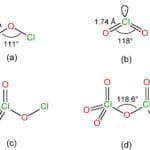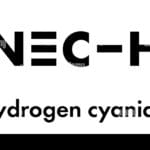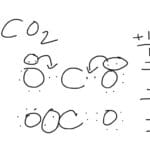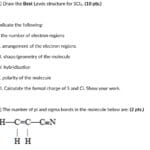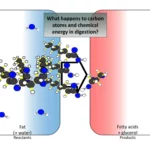Hydrogen cyanide (HCN) is a molecule with a deceptively simple formula, yet its structure holds the key to understanding its remarkable—and dangerous—properties. This guide provides a comprehensive, step-by-step approach to drawing the HCN Lewis structure, explores its geometry, bonding, and polarity, and touches upon its applications and significant toxicity. We’ll use visuals and 3D models to enhance understanding, making this complex topic accessible to all.
Building the HCN Lewis Structure: A Step-by-Step Approach
Let’s construct the Lewis structure of HCN, a blueprint revealing the arrangement of atoms and electrons within the molecule.
Counting Valence Electrons
First, we tally the valence electrons—the electrons involved in bonding—for each atom: Hydrogen (H) contributes one, Carbon (C) contributes four, and Nitrogen (N) contributes five. This gives a total of ten valence electrons.
Determining the Central Atom
Carbon (C) typically occupies the central position in HCN because it’s less electronegative than Nitrogen (N). Electronegativity reflects an atom’s tendency to attract electrons in a bond.
Connecting the Atoms
We begin by forming single bonds between the central carbon atom and both the hydrogen and nitrogen atoms (H-C-N). Each single bond uses two electrons, leaving six valence electrons unaccounted for.
Completing the Octet Rule
To satisfy the octet rule (each atom aims for eight valence electrons, except Hydrogen, which seeks two), we introduce a triple bond between the carbon and nitrogen atoms (C≡N). This triple bond uses six electrons, leaving all atoms with a complete valence shell. Nitrogen will now also possess one lone pair of electrons (two electrons not involved in bonding).
Formal Charge Check
A formal charge check verifies the electron distribution. In the correctly drawn Lewis Structure of HCN, all atoms will have a formal charge of zero.
The Final HCN Lewis Structure
The complete Lewis structure for HCN is:
H-C≡N:
[https://www.lolaapp.com/#what-is-the-structure-of-hcn]
Unveiling HCN’s Shape and Geometry: VSEPR Theory
The HCN Lewis structure reveals a linear molecular geometry. We can use Valence Shell Electron Pair Repulsion (VSEPR) theory to predict this shape.
Applying VSEPR Theory
The central carbon atom in HCN has two electron domains: one from the single bond to Hydrogen and one from the triple bond to Nitrogen. To minimize electron-electron repulsion, these domains arrange themselves 180 degrees apart, resulting in a linear geometry. The bond angle is 180°.
Bond Polarity and Molecular Polarity
While the individual C-H and C≡N bonds are polar (due to the difference in electronegativity between the atoms), the molecule as a whole is considered nonpolar due to its symmetrical, linear structure. The opposing dipoles cancel each other out.
[https://www.lolaapp.com/#what-is-the-molecular-geometry-of-hcn]
Delving Deeper: Hybridization and Bonding in HCN
The bonding in HCN involves sp hybridization of the carbon atom.
sp Hybridization
One s orbital and one p orbital of the carbon atom hybridize to form two sp hybrid orbitals. These sp orbitals create sigma (σ) bonds with both the hydrogen and nitrogen atoms. The remaining two unhybridized p orbitals on carbon overlap with p orbitals on nitrogen to form two pi (π) bonds. This explains the strong triple bond between carbon and nitrogen.
Sigma and Pi Bonds
It’s important to note that the triple bond (C≡N) consists of one strong sigma (σ) bond and two weaker pi (π) bonds. The sigma bond is formed by head-on overlap of the hybrid orbitals, while the pi bonds result from sideways overlap of the unhybridized p orbitals.
[https://www.lolaapp.com/#what-type-of-bond-is-hcn]
Molecular Orbital Theory: A More Advanced Perspective
Molecular Orbital (MO) theory provides a more sophisticated description of bonding.
MO Diagram (Simplified)
A simplified MO diagram for HCN would showcase the combination of atomic orbitals to produce bonding and antibonding molecular orbitals. Electrons fill these orbitals according to the Aufbau principle (lowest energy levels first). The strong overlap in the bonding molecular orbitals associated with the C≡N triple bond explains its exceptional strength. This analysis provides a more complete understanding of the electronic structure than the Lewis structure alone. Experts may find detailed calculations helpful to understand further.
HCN: Properties, Applications, and Cautions
Hydrogen cyanide possesses a number of interesting properties, but its extreme toxicity overshadows most other considerations.
Properties
HCN has a low boiling point and a characteristic, albeit not always detectable, bitter almond odor. Importantly, the absence of this odor does not guarantee the absence of HCN.
Applications (Brief Overview)
HCN has limited industrial applications, primarily in the production of certain chemicals. It is vitally important to never attempt to synthesize HCN without rigorous safety protocols and extensive training.
Extreme Toxicity
Hydrogen cyanide’s extreme toxicity is well-documented. Its historical use in executions underscores its devastating effects on biological systems. Its mechanism of toxicity involves the inhibition of cytochrome c oxidase, a crucial enzyme in cellular respiration. This disruption leads to cellular death and ultimately organ failure. The effects are quick, and the potential effects are quite severe. Handle HCN only with the utmost care.
[https://www.lolaapp.com/#what-is-the-structure-of-hcn]
Comparing HCN to Similar Molecules
Comparing HCN with isoelectronic molecules, such as carbon monoxide (CO) and nitrogen gas (N₂), reveals how subtle changes in atomic composition can significantly impact molecular properties. All three are linear molecules with ten valence electrons, yet their differences in electronegativity lead to differences in their polarity and reactivity. Further research into such comparisons could lead to further understanding of the differences. This comparison highlights the structure-property relationships.
Conclusion
This guide provides a comprehensive overview of the hydrogen cyanide Lewis structure, going beyond a simple explanation to include its geometry, polarity, bonding, and toxicity. Visual aids and the integration of various bonding theories support a deeper understanding. Remember, while this guide provides current knowledge, ongoing research may further refine our understanding of HCN’s behavior. Always prioritize safety when dealing with this highly toxic substance.
- Crypto Quotes’ Red Flags: Avoid Costly Mistakes - June 30, 2025
- Unlock Inspirational Crypto Quotes: Future Predictions - June 30, 2025
- Famous Bitcoin Quotes: A Deep Dive into Crypto’s History - June 30, 2025
